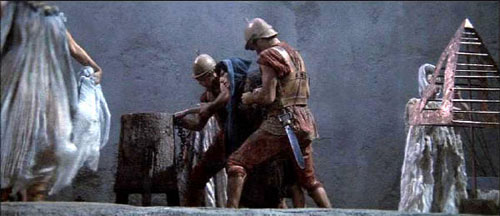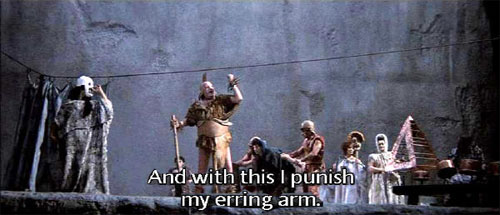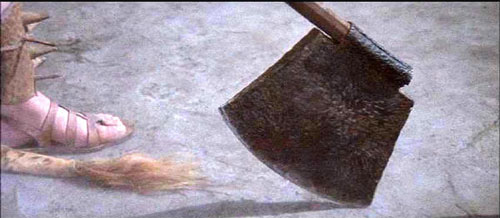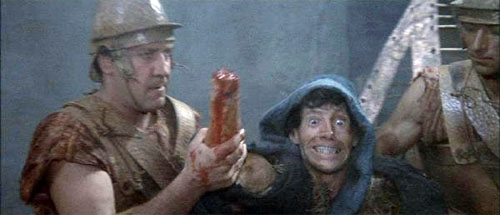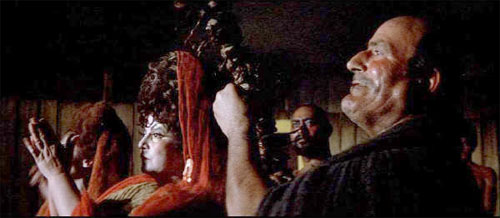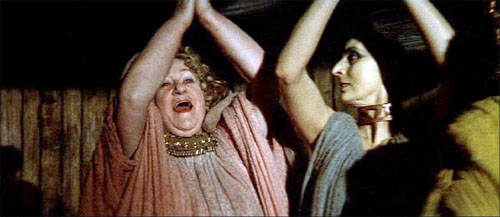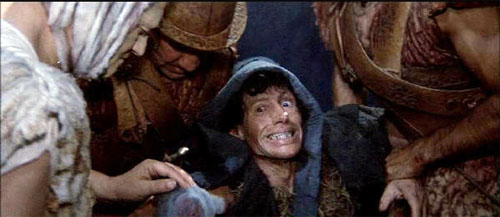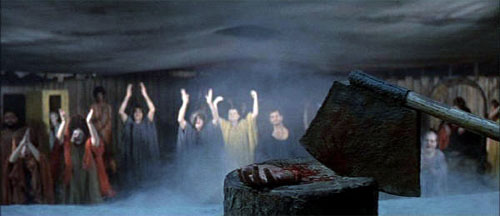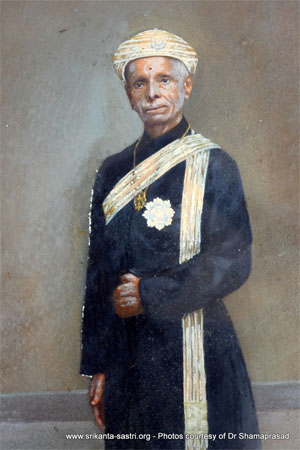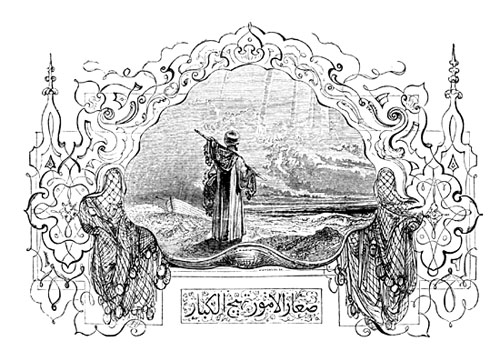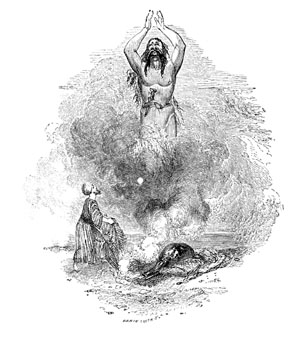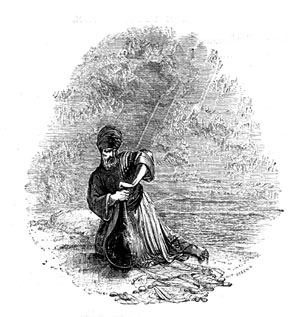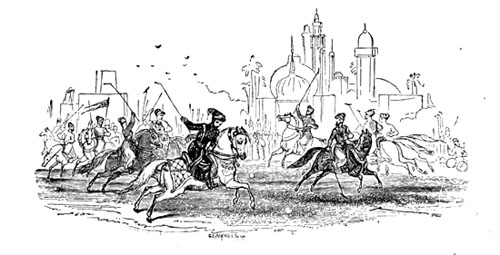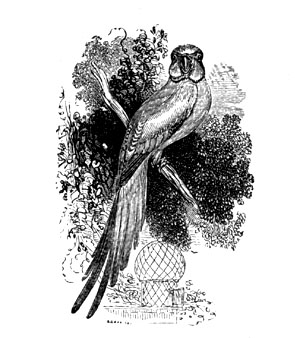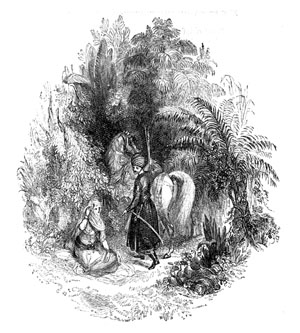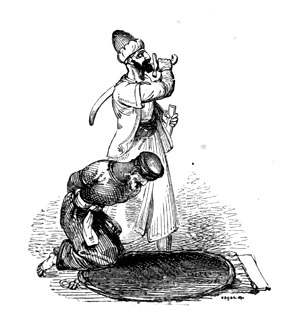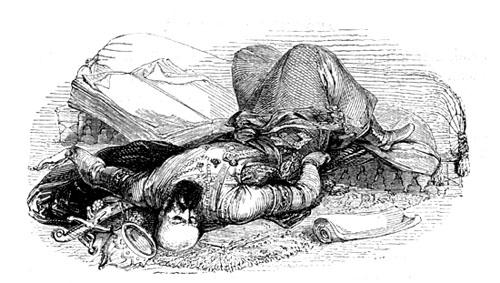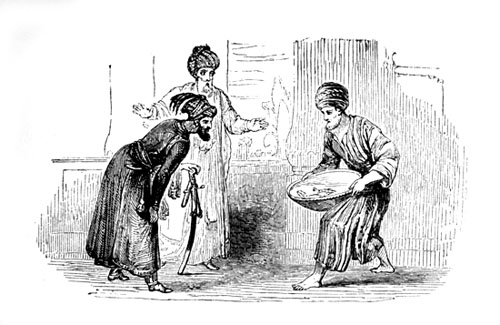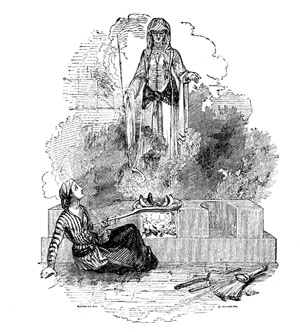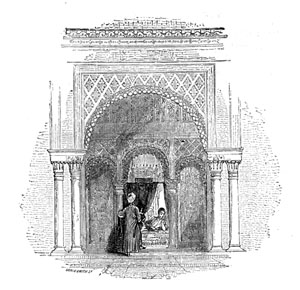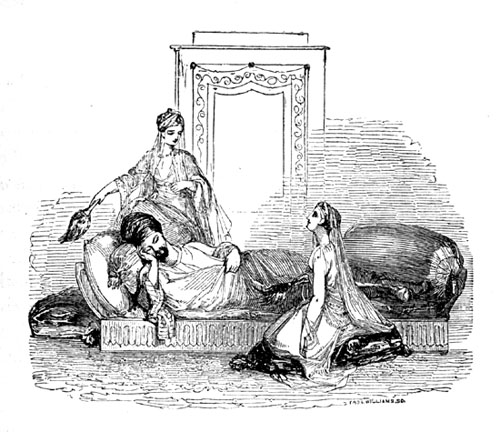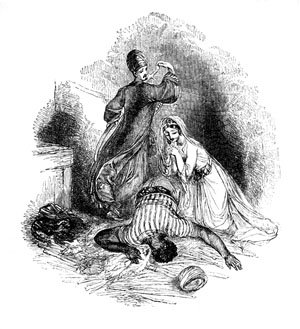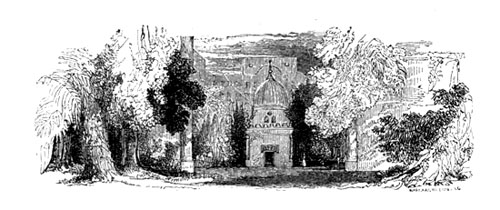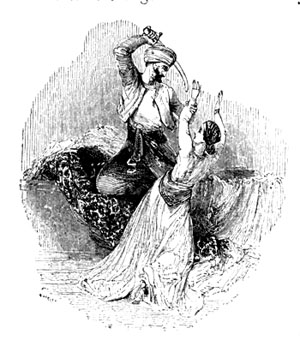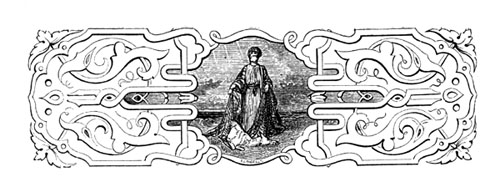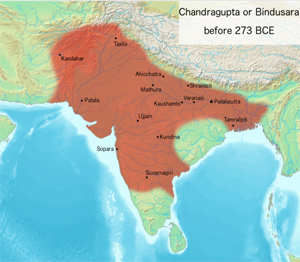Mystic Tales of Lama Taranatha: A Religio-Sociological History of Mahayana Buddhism
by Lama Taranatha
Translated into English by Bhupendranath Datta, A.M., Dr. Phil.
1944
Ramakrishna Vedanta Math
Highlights:
The German translation of Lama Taranatha's first book on India called The Mine of Previous Stones (Edelsteinmine) was made by Prof. Gruenwedel the reputed Orientalist and Archaeologist on Buddhist culture in Berlin. The translation came out in 1914 A.D. from Petrograd (Leningrad).
The German translator confessed his difficulty in translating the Tibetan words on matters relating to witchcraft and sorcery. So he has used the European terms from the literature of witchcraft and magic of the middle ages viz. 'Frozen' and 'Seven miles boots.'
He said that history in the modern sense could not be expected from Taranatha. The important matter with him was the reference to the traditional endorsement of certain teaching staff. Under the spiritual protection of his teacher Buddhaguptanatha, he wrote enthusiastically the biography of the predecessor of the same with all their extravagances, as well as the madness of the old Siddhas.
The book contains a rigmarole of miracles and magic…."He acquired all Siddhis: the globule Siddhi, the eye-ointment, the sword-Siddhi, further all power to destroy and again to revive to life, and got complete power over all superhuman Yaksas and Nagas and especially received a Vajra-body which was created for him by the elixir of life. He became a giant on magic power and supernatural knowledge….
The king received the elixir of age and the Yaksas as his servants. He built five hundred temple-cloisters as the resting-place of the preachers. Later, he (acarya) dwelt on the Sriparvata for two hundred years long, surrounded by the Yaksis and remained there practising the Tantras till his subsequent beheading by the grandson of the king Udayana called Susukti or the mighty prince. As it is related, it took place, in his seventy years of age, when the 71st year was not complete as it was only half-year. The mother of the prince asked his son to beg of the head of the acarya as his father and acarya possessed magic by which his age would be as long as the acarya, and as the acarya had a Vajra-body he would not die. The mother wanted it for the good of the son. The prince went to Srlparvata and begged of the acarya for it. The head was cut off by a Kusa-stalk. A word was heard: 'I go from here towards Sukhavati, but will come back again and will rejoin the body.' Thereupon there were earthquake and famine for twelve years…
He was shown a mirror in which he saw himself roasting in hell-fire…
Then he asked a ferryman on the shore of the Ganges to take him to the other side; but it happened so that, he having no fare for the ferry, showed his pointing finger to the Ganga and the Ganga stood up straight. Thus he came to the other side. Then in Odica, he demanded brandy from a wine-selling woman and as this one said he must pay the bill, he began to chase the shadows of a sun-dial from the fields but which did not go away from there, so he pointed his finger towards the sun and held it as with a nail and drunk brandy. As he did not want to set it free, the clocks and the guards made mistake. The king who knowing that the Yogi wanted to show his power, gave the price for the brandy and prayed to him to let the sun loose…
As now the self-erected stone image of the Chandika slightly shaking began to move, there with a blow on the head, he went with head on her breast to the womb. People say that he is still there, kneeling in straight position, but his pair of ears are only to be seen…
This Yogi could not be destroyed in water, fire, by weapons and by poison…
He gave Siddhi to all men, and from animals to worms and disappeared in the Rainbow-body…
Once seeing him in the company of a common woman of the temple, the king ordered them to be burned. But out of the ashes, he reappeared as Heruka with gakti in a halo of brilliant rays. Thus, the people were surprised and became converts to Vajrayana…
He meditated and attained deep Samadhi on the bright Ray, built a hut near a door of a city in Udayana and worked jugglery with the king. He disappeared in celestial region by magic…
The boy and the girl changed themselves into Vajra and Ghanta, he took hold of them and flew to heaven…
There was a certain Mantravati experienced in the Mantras of Sahajasiddhi and magic-powers, she was a Hexe (witch). She wanted to destroy the acarya and his followers and attempted to seize him; but could find nothing but a piece of woollen-cloth (Kambala) on the spot where the acarya sat. The witch saw that this was a magic work of the acarya that he had transformed his own body into a woollen-cloth! ‘That must be torn off and everybody must eat a piece of it.' With these words she tore off the cloth and everybody (of her following) ate off a piece. Thereupon the acarya made himself again visible and cursed them all, and five hundred witches with Mantravati became five hundred sheep-headed Matrkas."…
As he showed his index-finger to the Linga, its head fell down to the foot, and as he looked at it, the body broke up in many pieces. Then, the whole world recognized that he had acquired Siddhi; and they trampled the idol on foot…
But the Tirthikas scolded the king, who ordered his men to cut off his head. But they could not do damage to the acarya inspite of their all sorts of weapons. Then, as the acarya clapped both of his hands, the palace broke into pieces, and he with his exorcising look made the people of the king benumbed and stiff…
Later he with five hundred peoples went to heaven…
One morning his mother saw the acarya in the king's fruit-garden. He was sitting at the foot of the trees and uttered the words: ‘Narikela Bhiksavo' and the fruits of the tree came by themselves to him. After having drunk the cocoanut water, he spoke: ‘Narikela Uparajahi’ and the fruits went up as before…
The king dug a groove in the earth and filled it with thorn-bushes, elephant and horse dung and threw the acarya there and covered him up. So the acarya showed a double function of his body: in Jalandhara he was wandering to work for the salvation of beings, and at the same time taught in Bengal…
In midnight appeared the man-eating Dakinis and Raksasas, everyone bound the body of a man and taking him away, put him before the shrine of the Matrkas, and made themselves ready to devour them. But as the monastery steward uttered the word: ‘Phat’ ([x]) and made dancing movements, the Dakinis and Raksasas became senseless and fell to the ground. The shrine of the Matrkas fell down into three pieces….
After religious discourses Jalandhari gave him a skullcup full of light…Finally he told them: 'Keep everything in the secrecy of your memory for three years, after it bring all the Tantra powers in function and you according to your wish will have holy life! And all will acquire the Siddhis.' Saying this he became invisible…The six Yogis received the Siddhi of immortality. …
All men were in doubt when once in a city of Bengal assembled hundred thousand men to see him, the acarya appeared with the Sakti pounding Sesame in the air above the ground about a man’s height. And as people asked him different questions, he gave answers in a song of his experience. It is narrated that the assembled people understood the sense and acquired the Siddhi. Thus he became famous as Siddha Tilli. After working for the salvation of all creatures for a long time, he went bodily to heaven….
Once during swimming he was eaten up by a fish, but having meditated the Mandala of Heruka he came out without any harm…
A Tirthika Yogi let two meteors fall from heaven. Both were black, and in the shapes of houses but with human heads. Acarya knowing these to be eye-illusions muttered Dharanis to annul them and both of them transformed themselves in little pieces of coals; then some of the Tirthikas showed a piece of art — as flames from the fire coming out of the body. But he put water on it and extinguished the fire. Thus all the attacks were parried each time and juggling works were defeated by the juggling works. In the end, the four leading teachers of the Tirthikas, by the magic-power of the acarya, were transformed into cats. Now the Buddhists increased very much in this country….
He mastered Tantras and collections over Sambara, Hevajra, Bhairava and four thrones. He lived two hundred years…
With the words: 'Go to Udayana' went up magically the acarya in heaven…
He disappeared again through the door of benediction of acarya Nandapala and emerged up in two and a half hundred years in the south. There he met acarya Asitaghana. This one was on the border of his second hundredth years when he met the acarya. Thereupon began the acarya to work with activity…
Then the Castellan smote him with a batan. The acarya blew a horn, thereby the stone statues of the temple of Jagannatha lost their extremities and organs and their former wonder powers…
There appeared the acarya magically doubling his body four times and consecrating simultaneously in all four temples. The Tirthikas came to confuse them (inmates of the convents), but they were defeated by greater exorcism…
He needed CandaIa girl ([x]) for the support of his magic, and got one by giving her parents gold procured miraculously as high as her stature. He reached the highest state of Mahamudra-siddhi. After he had written many text-books, bodily he flew up to the heaven like a Garuda-prince to the Ksetra of the Buddha-Aksobhya…
He was threatened by a Tirthika king who wanted to break his head. His head was cut off, but he put on a buffalo-head on his shoulders. He went to Harikela to preach. There exorcised a cat, hence he was called Bhiradi or Birali…
'He lived with Vajrayogini who looked like a she-dog before the world. Hence he was called Kukuri. This acarya took as a Yogi of Srivajrabhairava, the pose of a destroyer, and there was a history that a king of the Tajiks (Persian) with his elephants were reduced to dust…
On his way back to Jambudvipa the sea became stormy and thieves came there. Muttering the Dharanis [incantations] he threw down a handful of sand offering, brought the robbers and thieves in his power and the sea became calm…
Vikrtideva was a well-informed Bengali-Pandita. He went to Nalanda and busied himself much about Dharma and all the Upadesas. Though, when he left his motherland, he promised his original Guru to be a monk, he did it later, as he had desire of the flesh, took a wife and had three children: One boy and two girls. But in dream AvaIokitesvara said as he had broken the order of his Guru, he would die within three years of an infectious disease and would go to hell, he got very much frightened, cut himself off from his family and took vows. But the prophesy was fulfilled, after three years he got the contagion and died. There his acarya saw in his mind, how he was taken away by the beadles of the Yama, but five gods and Hayagriva with Aryavalokitesvara at their head struck the hell-beadles and Aryavalokitesvara shed tears and ran towards him to bring his body back. And while he was brought back visibly to the Parivara of the Arya, he came back to life again. As he had seen the face of Avalokitesvara, he had greater power, gained success in his spiritual dignity and the Siddhi…
Nagarjuna holding himself on the Dharanis of the 'air-wanderers' (Dakinis), brought two shoes from the tree-leaves which enabled him to go through the air. The one he concealed, he put on the other and flew to Vyali through the air. As he now demanded that the acarya must give him the gold-essence, Vyali answered thereupon: 'Give me thy shoe, that will be the worth of the gold-essence that I give to you!' Then many Upadesas for Quicksilver-essence, many hundred thousands, aye many millions of methods of Elixir and beyond it, the power of exorcism to make gold, he gave to Nagarjuna, and he gave him for it a shoe. Then he put on the hidden shoe and went to India through the air and furthered there very much the Upadesas of Life-elixir. In the country of Gandhara in the north was a mountain called Dhinkota in the district called Munindra. He wanted to change it into gold and silver, but Aryatara who knew that would bring the future generations to fight amongst themselves, prevented it and by her blessing changed it to salt. And today it is known by the Gandhara country Lati.1 [Perhaps the salt-range of western Punjab is meant here.] …
When the others had gone, the acarya came there to beg of his food. She brought all food to him and the acarya said: 'When thy relatives do not get irritated then give me much food till tomorrow morning, so that you can remain; but if you are angry, then tarry now while I put fire in the surrounding woods, then fly and come to me!' She took her little child and flew. As she arrived at the place of the acarya, he gave her the Elixir of life. Thereby she received a Vidyadhari-body and doubled motherhood. Thus she received in quick succession a large number of children. The acarya gave the Elixir to them also, and there arose three hundred descendants with Vidyadhara-bodies…
As the fisher was in deep contemplation, he had thrown out his angle and drew it, but the fish drew him in its interior and swallowed him. As he was meditating deeply over the power of Karma, he did not die. As the river Rohita1 [Is it the same as the river Lauhitya which now-a-days is called Brahmaputra?] that today in Tibetan called gTsan-po, had reached Kamarupa, there lay a small hill called Umagiri, while there Devesvara zealously gave the Upadesas to the penitent Uma, and the fish swam in that water. The fisher, lying in the belly of the fish, heard that, meditated over that Upadesa and had great benefit. As a fisher again caught that fish and killed it, a man was there. Earlier he died there as a king; thirteen years had just past that formerly a son was born to him. In the belly of the fish he had spent the rest twelve years….
As concerns the Siddha Karnari, he had been the king in the country of Mewar. Some years had passed that he took a beautiful wife with the name of Pingali. She was very dear to the heart of the king. In order to examine her, once he went alone to a wood and let the false news to be spread, that he had been eaten up by a tiger and thus had met his death. The queen Pingali died from grief, and her dead body was brought to the burning-place. The king did not go back to the city, but standing by the side of the dead queen he constantly wept: 'Alas, alas Pingala!' Thus eight years, thus twelve years had passed. Then came there Siddha Goraksa. Inadvertently he let an earthen vessel (Dipi) fall down from his hand and he broke it. Then he began to lament and remained standing with the complaint: ‘Alas, alas Dipi.' Then spoke the king: 'What for this foolish Yogi makes such a lament when his water-vessel is broken?' Then to make it clear that it deals about a stroke that contains an allusion upon the other, spoke the acarya: ‘There thou art a fool, as regards my broken pot, it remains to me indeed as my property. Stop your lament over Pingala who is no longer present as she is reduced to dust.' Then he recognized him as the acarya Goraksa and prayed to make him his disciple. He spoke to him: 'Throw away the kingship from you!' As he put away his kingship, he followed him as a disciple. At one time the acarya ordered that he had got appetite for flesh and spirituous things. As the disciple went to the town to buy flesh and brandy, a woman had exhibited six pieces of pork and six flasks of brandy. She said: 'As price I demand your right eye, I will not be drawn into any other bargain.' Then the disciple in order to bring the offering to his acarya, took out the right eye and gave it to her. Thereupon he brought the flesh and the brandy to his acarya. On query he narrated the matter to the acarya. The acarya then demanded the left eye which was given. Thereupon the acarya blessed him and in three years he got back his eyes like before. And in the same period he became a Mahasiddha….
As regards the Siddha Nago, he was called the naked because he did not have a thread as cloth on his body. When he stayed in the south, he came in the social-circle of the first wife of the king and gave her the Upadesas. The king was angry, cut off the five limbs of the acarya, and threw them off towards the sky. But these limbs came back again and were fitted in the body. As this happened seven times, the acarya in the end gave out a curse and the king's five limbs fell off by themselves, and then he died. But after a prayer for it he came back to life. Thus he showed his power. Then he disappeared towards the mountain Bhindapala and there he is still living without throwing off his mortal body…
Later on, during the occasion of his stay in the south there lying the mountain Khagendra, the king named Ramacanda of the country of Bhirva came out for a hunt. He saw a Gazelle staying on the corner of the mountain. He followed its tracks and when he had arrived at it, the Gazelle changed itself into a tiger. As he was startled a little, the animal emitting forth sparks ran away to a hut of leaves. As the king went there to search about it, there was a bright splendour of a shining Bhiksu. On the question: 'Who art thou?' and being asked twice, the acarya did not give any reply. In answer to the third time he said: 'Thou king of bad character, what sayest thou? I am a Yogi.’ Now he overcame him with three magical-looks. The king became an extraordinary believer and fell to his feet. Then the king’s companions came and they also fell to the feet of the acarya. He made them glad by preaching Dharma, and after he had allowed a young Brahmana to have a look in his heart, who produced many songs and dances and then became invisible… The disciple meditated and within a short time won the Siddhi of 'seven miles-boot.'..
By making a vow on Mahabodhi, they received the answer that the time was proper to act, in order to accomplish the tasks of terror. This was met by the acarya and his four companions at Jarikhanda. They revolved the wheel of Yamantaka; then within six months the Pathans and the Mogols were innerly shaken and in the east all the followers of the religion of the Turuskas were slain in battle. The Hindu king Manasing was taken prisoner…
In the interior of the palace there was a Linga terrible to look at, and it was established from the time of Arjuna. He treaded and danced on it and so his foot-prints were stamped on it. At this the king out of anger let six elephants be excited. In spite of the number of the elephants being six, who seized him with their trunks, he was not to be moved. As he threateningly raised his finger the stone image of the Chandika, which once was of great miraculous power, melt away just like a lump of butter in the heat of the sun. Still now this figure remains there without becoming a mass. Then the king recognised, that he had acquired the Siddhi, and threw himself on the ground….
Further was the Turuska king from the country of Canka. He went on the street near the place where the acarya sat. As he used many abusive language to the acarya and this was heard by one of his disciples, he gave out the curse: ‘You all be dumb.' And the king and his people became dumb on the very spot. Then they were frightfully afraid and prayingly applied themselves to the acarya. Then he said: ‘To testify the power of the Bauddhas, all without exception you can speak again.' And thus it happened…
his body was changed into rainbow colours and his Jnanakaya clasped the heaven….
But this great Acarya brought in fourfold forms his tasks to end magically: Only through the word what he said took place, through the four glances of exorcism, in the midst of little refined congregations astonishment, and wonder-signs appeared on their faces and that he (in the Ganacakra) by the power of magic created thither flesh-balls, liquids, brandy and blood and the fruits of the woods…
At first he saw the face of Avalokitesvara and of that Hayagriva, then that of Manjusrl and Yamantaka, thereafter of Hevajra and of Kurukulli. He made Mahakali completely his servant, and he received everything what he ordered from the Six great Yoginis….
Man appointed time which was the fruit of the previous birth, lotus flowers and wheels (Cakras) came out in her hands and feet and thus as she was furnished with Laksanas, a prophesy came about her that when she could dwell, she would acquire Mahatmya. She heard that in a city of Marahata near Cavala dwelt the Mahacarya Santigupta. As soon as she heard his name, she felt a need for Samadhi and as soon as she saw his face, plunged into the complete Samadhi….By the Yoga, her power over the air became unparalleled. She could ascend up the sky for miles. She also acquired the four magical looks….
Here is written only on the basis of that which anywhere to be perceived from the histories prepared in India, and at that which is given in Tibet by the believing people, that was present from old times."
-- Mystic Tales of Lama Taranatha: A Religio-Sociological History of Mahayana Buddhism, by Lama Taranatha, Translated into English by Bhupendranath Datta, A.M., Dr. Phil.
Lama Taranatha:
Tarantha, son of Namgyal P'un-ts'ogs. was born in Tsang on the 8th day of the pig-male-tree year, corresponding to 1573 A.D. and was called Kun-dgah SNyinpo, or "The essence of happiness". He studied in the Jonang monastery, north of Sakya under the religious name Taranath, an din his forty-first year built himself a monastery in the neighbourhood, which he named rTag-brten, and filled it with many images, books, and caityas. He laterly proceeded to Mongolia at the invitation of the people of that country, and founded there several monasteries under the auspices of the Chinese Emperor. He died in Mongolia, and was canonized under the title of "The Reverence Holiness," Je-tsun-dam-pa." -- From L. Austine Waddell: The Buddhism of Tibet or Lamaism (1899), p. 70
Contents:
• SUBSTANCE OF INTRODUCTION
• PREFACE BY THE ENGLISH TRANSLATOR
• FOREWORD
• PUBLISHERS NOTE
• INSPIRATION I
• INSPIRATION II
• INSPIRATION III
• INSPIRATION IV
• INSPIRATION V
• HISTORY OF THE CONSECRATION OF VIKRAMASILA
• HISTORY OF CONVERSION IN NALANDA
• INSPIRATION VI
• INSPIRATION VII
• APPENDIX I
• INDEX
SUBSTANCE OF INTRODUCTION
by Gruenwedel
The German translation of Lama Taranatha's first book on India called The Mine of Previous Stones (Edelsteinmine) was made by Prof. Gruenwedel the reputed Orientalist and Archaeologist on Buddhist culture in Berlin. The translation came out in 1914 A.D. from Petrograd (Leningrad).
The German translator confessed his difficulty in translating the Tibetan words on matters relating to witchcraft and sorcery. So he has used the European terms from the literature of witchcraft and magic of the middle ages viz. 'Frozen' and 'Seven miles boots.'
He said that history in the modern sense could not be expected from Taranatha. The important matter with him was the reference to the traditional endorsement of certain teaching staff. Under the spiritual protection of his teacher Buddhaguptanatha, he wrote enthusiastically the biography of the predecessor of the same with all their extravagances, as well as the madness of the old Siddhas.
Prof. Gruenwedel said that the folklore exploited for this work is not small; it is especially noticeable in the text of the occasional news about the old ruins, temples and religion, about the destruction wrought by the followers of Islam, further the occasional informations about the relations between the Brahmanical gods and the Buddhist Bodhisattvas and divinities. Also, there are some informative mentioning about Further-India and the manifestation of Virupas in China. Perhaps here lies before us the ioonographic agreement of the Indian Siddhas with the Sen-nin representations.
As sources of Taranatha, he mentioned the Magadha-Panditas Indrabhadra, Indradatta and Bhataghadri instead of Bhataghati, the last two he mentioned at the end of History of Buddhism where Indrabhadra corresponds with his Ksemendrabhadra.
It seems Taranatha was much dependent on the Tibetan recipients regarding language, it is especially noticeable in connection with the proper names.
The English Translator
***
PREFACE BY THE ENGLISH TRANSLATOR
The book of Gruenwedel contains 212 pages of which 146 pages only cover the text. The English translation is an abstract of the text with the informative notes taken from the German translator. None of the names of the Siddhas mentioned in the text has been left out. The book contains a rigmarole of miracles and magic. Hence the important parts of the stories about the Siddhas have only been selected, else there is a repetition of the same nature. The English translator has tried to be literal, only in a few places where abstract and free translations have been made he has marked it within brackets as —('Translator)'.
The book is translated into English in an abstract form as in these days of reawakening of Indian culture, the Indian historian and the sociologist may find information in Taranatha's books regarding Buddhist India. By perusing the Tibetan books translated into English and German it seems to the translator that all the Tibetan writers on India have used common source for their informations regarding Indian history. And in some of these books, the authority of the Indian book Aryamanjusrl-Mulakalpa (translated by K. P. Jayaswal as An Imperial History of India) is quoted viz. the age of Panini is given as contemporaneous with Mahapadmananda of Magadha.
FOREWORD
In going through Taranatha's books it becomes evident that he never came to India. His knowledge of Indian geography was not clear, he made mistakes about the names of persons, geographical positions of different places etc. Further, it is clear from his writings that much of what he called Siddhis were knowledge of alchemy, witchcraft and Blackmagic.
Again in perusing this book one will find out the process by which Mahayana Buddhism has gradually amalgamated itself with the Brahmanism of later days which will account for the disappearance of the former from India. Indeed the Siddhis, the Sadhanas and the beliefs mentioned in his writings are still extant amongst the Hindus of present day.
The abstract translation is presented to the public sp that the research student may gather some informations which may throw some further light on the history and sociology of India of that time. Again, the book containing some Indian words expressed by the Siddhas may help the philologist in his investigation regarding the languages of the period. As regards the sociological and other information culled out from this book the following are pointed out:
(1) That India had connection with the outside world at the period dealt by Taranatha.
(2) The sorcery practised in India and Europe had common forms.
(3) The nature of the story of seeing in magic-mirror was common in both the places.
(4) Pa is the Tibetan contraction of the Sanskrit word Pad or Pada.
(5) Karmaru is the Tibetan contraction of the Indian name Kamarupa.
(6) Odivisa is Orissa, Otantapuri is Odantapuri. Udyana or Udayana is Udyana (today's Cabul and Swat valley).
(7) Some of the Buddhist Siddhas carried Jata (long matted hair) on their heads.
(8) Taranatha spoke of the existence of Citizens'—‘Gild’ of that period.
(9) The use of sun-dial existed in that period.
(10) Women used to sell brandy in those days.
(11) The book contains instances of inter-caste marriages.
(12) The wretched condition of the field-worker (peasant) in India was notorious even in those days and known to the outside world.
(13) The word 'Dinar' the Indian form of the Roman coin 'Dinarius', which was used in Sanskrit literature, still persisted in the time when Taranatha wrote this book.
(14) The book mentions a Ksatriya-Pandita as a purohita (priest) of a king. This reminds us of the practice of the Vedic age. It lends further strength to the proof that the priesthood has not always been the sole monopoly of the Brahmanas.1 [(1) The investigators say that in some parts of India non-Brahmanas still act as priest (vide N. N. Vasu: The Ethnology of the Kayasthas)]
(15) The book mentions the employment of Tajik (Persian) soldiers in the service of a Raja of Maru (Rajputana).
(16) From the list of the names of the Siddhas it will be found out that some of them were of so-called low castes.
BHUPENDRANATH DATTA
3, Gour Mohan Mukherjee Street,
Calcutta, April 1944
THE PUBLISHER'S NOTE
For the first time this book is now translated into and published in English from German. Originally this book was written in Tibetan by Lama Taranatha and translated into German by the great scholar Prof. A. Gruenwedel. Dr. Bhupendranath Datta, the eminent research scholar in the fields of the Comparative History and Anthropology, has spared no pains to present to the reading public an English rendering from its German version. Besides being wonderfully proficient in the World History and Anthropology, his intimate knowledge in German, French and some other languages of the Continent is well-known to the learned section in India and abroad. We have no hesitation to believe that this faithful English translation from the gifted pen of Dr. Datta will be appreciated by all readers. This book opens a sealed chapter on the religio-sociological history of Buddhist India. We offer our sincere thanks to Dr. Datta for giving us kind permission to publish this important volume.
We would express our gratitude to Swami Sadananda Giri for allowing us to print the pictures of Bodhisattva, Bhairava, Ganesa and Prajnaparamita in this book. These were published in his valuable book: Javadwipa. We are also greatly indebted to Sj. Ajita Ghose for lending us two other blocks of Vajra-Sarasvati and Atisa Dipankara. The pictures are arranged in the first page in this order” (1) Vajra-Sarasvati (A Tibetan painting) and (2) Atisa Dipankara, and in the second page (1) Boddhisattva, (2) Bhairava, (3) Ganesa (Tantric), and (4) Prajnaparamita.
15-8-44
Ramakrishna Vedanta Math
19B, Raja Rajkrishna Street,
Calcutta
MYSTIC TALES OF LAMA TARANATHA: INSPIRATION I
"Here follows a narration, which is equal to a precious jewel as it is rich in wonders, and which is endowed with seven holy inspirations, while the Jatakas contains the list of former teachers.
I bow to the feet of my holy teachers. After testifying my reverence to the bands of the Gurus who following one after another exercised the life-bringing path of Vajradhara to all living beings, it was my task to glorify their lives-career as far as possible in a Sutra. For although itself a perfect one, the tongue of which had the power to work wonders, it would be impossible to execute the fame of these men in hundred ages, yet at the command of my Guru this book is written.
As I through the presence of our teacher, the holy one, who carried the name of Buddhaguptanatha, and in remembering the Bauddhas of three ages, was entrusted with the task to unite properly all words from prose and verse in the sea of theme-building; while I tried to keep myself everywhere within the jurisdiction of his power, where it was only possible on the power of his holy words, and there also preceded the presence of my great Siddha Guru himself, who through his holiness is a root-Guru, thus the people will be properly informed of the power, also of incorporeal power of commission of even of this man who himself has the fame to be graced with the seven inspirations of beatitudes. (P. 9).
What concerns the first inspiration was the Mahanmudra-Revelation. Its adept was Mahacarya Brahmana-Rahulabhadra born in the country of Odivisa. By caste he was a Bhahmana and from childhood was confided with the Vedas and with Vedangas. Going to Madhyadesa, he professed the doctrine of Buddha and gradually became a great Tripitaka-knowing Bhiksu. The teacher of this acarya was Sthavirakala, whose teacher was named the honoured Asvaghosa. Though the Gurus say that the teacher of the last had been Upagupta, yet it is difficult to make a judgment over the correctness of the ancient teacher-generations. But it is extolled in the context of Tibetan lists that he was the corporal student of the son (of Gautama) of Rahulabhadra. So it is sufficient to note here without further examination. Later, he became an abbot in Nalanda. Lastly he went to the south. Thus, in the country of Mahratta he saw the Yogini of the sphere of his work in the form of the daughter of an arrowsmith, who could extinguish the essence of his ego-existence. He knew Dharma thoroughly, gave at once the Mudra to the daughter of the arrow-smith and prosecuted the work of arrow-making while wandering in many countries. When his wisdom began to grow more, he received the name of Saroha, i.e., who is met with the arrow. Thus, came innumerable men with the king at the head, to see him, and they derided him. There in the posture of a Brahmana, the acarya sang 'ah hurra, indeed I am a Brahmana, I live with the daughter of an arrowsmith—caste or no caste, there I do not see any difference; I have taken the sworn vow of a Bhiksu, I go a-begging together with a woman—sin or no sin, I do not see any distinction.' 'Here is an impurity', thus doubted men amongst themselves, but could not recognize that the man is poisonous as a serpent. But after he had sung the Doha-Vajra songs the five times hundred thousand men with the king acknowledged excellently the aim of his action. As he now acquired a Vidyadhara-body, magically he went to heaven and finally became invisible." (pp. 10-12).
Here, the author states that this Brahmana Kahula and Sthavira Rahula are two different persons.—(Translator).
"His pupil was the acarya Nagarjuna. He was born in the south in Vidharbha, by caste he was a Brahmana. Finally he came to Nalanda. As his teacher Rahulabhadra advised him to mutter incessantly the Dharanis of the Amitayus so it was possible for him to live in peace. He became a monk there. There was nothing for him to learn, as neither Mahayana nor Hinayana-pitakas remained strange to him. Therefore, he exercised the Mahamayuri, the Kurukulli, the nine Yaksinis and the Mahakalas; he acquired all Siddhis: the globule Siddhi, the eye-ointment, the sword-Siddhi, further all power to destroy and again to revive to life, and got complete power over all superhuman Yaksas and Nagas and especially received a Vajra-body which was created for him by the elixir of life. He became a giant on magic power and supernatural knowledge. In various places he performed Siddhis of the sword and quicksilver-Siddhis. For the Sangha he created food materials as well, when the abbot Rahulabhadra was busying himself with the exorcism of Aryatara, Nagarjuna came to the abbey at that time. During this period there was a famine in Magadha for twelve years. Acarya performed a gold-tincture (Siddhi), and as far as this gold-tincture reached, the cornfields changed and there was no famine, hence the Sangha was not without bread.
Then he worked on many heretical handbooks viz. those which belonged to Veda-class; and fought with all enemies of Mahayana viz. Samkara, with the Bhiksus etc. refuted them, and as well as many dialectical polemical literature written by the Saindhava Sravakas. He collected all the copies and buried them under the ground. Later, once he fought with five hundred Tirthikas in the city of Jatasamjaya, lying in the south, he defeated them and won them over to the religion. Thus he made the Mahayana as brilliant as the sun. Then he wished to change the Ghantasaila and many mountains lying on the north viz. Dhinkota etc. into gold. Aryatara dissuaded him from it as it would bring quarrel over it in future. But it is said that many gold-mines are present there, and at least the stones show the colour of gold. Later, while journeying northward he seeing many boys playing, prophesied that a boy would be a king. Twelve years later, coming back to Jambudvipa from Uttarakuru he saw one of the boys as a king named Udayana who made reverences to him. As a consequence the king received the elixir of age and the Yaksas as his servants. He built five hundred temple-cloisters as the resting-place of the preachers. Later, he (acarya) dwelt on the Sriparvata for two hundred years long, surrounded by the Yaksis and remained there practising the Tantras till his subsequent beheading by the grandson of the king Udayana called Susukti or the mighty prince. As it is related, it took place, in his seventy years of age, when the 71st year was not complete as it was only half-year. The mother of the prince asked his son to beg of the head of the acarya as his father and acarya possessed magic by which his age would be as long as the acarya, and as the acarya had a Vajra-body he would not die. The mother wanted it for the good of the son. The prince went to Srlparvata and begged of the acarya for it. The head was cut off by a Kusa-stalk. A word was heard: 'I go from here towards Sukhavati, but will come back again and will rejoin the body.' Thereupon there were earthquake and famine for twelve years. As the prince was afraid of the rejoining of the body he threw the head many miles distant from the place of beheading. A Yaksi took up the head, and the Yaksi Ksitipati built a temple over the head and body. My Lama has seen and narrated the following: This temple whose walls are formless and seem to be like rocks is a wonderwork. The outside of it is steep and there is no way to it. (pp. 14-19).
His disciple was Mahasiddha Savaii. When Nagarjuna was staying in Bengal, a dancing-master brought there children (brother and sisters) from the east. He called them and showed the figure of Bodhisattva Maharatnamati. As the dancing-master wanted to see also, he was shown a mirror in which he saw himself roasting in hell-fire. He wanted to be saved and was asked to meditate on Sambara. After his meditation, he recognized the original cause of his soul and recognized the face the Bodhisattva Maharatnamuni. Then Nagarjuna told him that as he now got power he should go to the south (Sriparvata), live the life of a hunter and create the good of the creatures. The both sisters Logi and Guni got their Mudra names as Dakini Padmavati and Jnanavati. He lived with them outwardly a sinner. He got the grace of Vidyadhara and became famous as Savarl.
This acarya is also called the younger Saroha. The disciple of this acarya was Lui-pa (Luipada) whose disciple was Dombi, whose was Tilly, his Naro, his younger Dombi, his Kusalibhadra (pp. 19-20). There were series of schools, Luipa, Darika and Antara built also another series which began with Tilo.
Luipa was a writer of the king of Udayana in the west named Samanta Subha. Once he met Mahasiddha Savari who together with him sang a song, and received Abhiseka and Tantras from the latter. Once he went to a cremation place (lit. field of corpses), sat himself in the rows of the Dakinis and made himself master of the inn (lit. a publican) and therefrom he distributed the flesh of seven corpses. As he had now received Vajravarahi in exorcism-Mandala of Abhiseka, he said: 'Kicking with outstretched foot I destroy the slavery of Samshara, Vajrasattva is a greater king, more and more again one should set himself to business.' Later, he perceived that it would be necessary to meditate without disturbance. On that account, he went to the east, to Bengal, and when he saw on the bank of the Ganges, a hill made of heaps of fish-entrails, he meditated there for twelve years, ate the fish-entrails and acquired the Mahamudrasiddhi.
He also converted miraculously the king and minister of Orissa. Thereupon, the king got the name of Darika or Dari, the servant of Hetaera, the minister, the name of Denki (rice-husking mill). He worked on the Denki of a brandy-selling woman, (pp. 19-23).
Another disciple of Savari was Maitri or Maitrigupta. He was a Tirthika-Pandita and a Brahinana. Later he met Naro and himself joined with the Bauddhas, received Abhiseka and Upadesa and became a monk of Nalanda. Getting instructions from many great and learned Gurus like Ratnakarasanti, he became a great Pandita and dwelt in the monastery of Vikramasila. Though he carried on the profession of a Pandita and practised no exorcism, he beheld Vajrayogini personally. Once as he did not properly recognize his own nature he got a prophesy. Consequently he went to Siparvata to see Savari. In his journey towards the south he met the prince Sagara. Both went, towards Sriparvata and asked everybody where was the old Siddha Savari. They travelled for a half-year in this way. But as the head hair (Jata) of Savari was lousy and possessed by nits, both the Saktis were busying in removing these things. Maitri for a moment was staggered, but the prince fell down at his feet. As the words resounded: 'Aya Jara Valahu,’ Maitri became at once free, received a rainbow body and faith arose in his heart. But as again he saw that both the women were killing swines, roes and peacocks, he again became a little unbeliever; but with the snapping of the fingers everything disappeared. Now he was given Abhiseka, all the Upadesas and commenting advices being bestowed, the wisdom of knowing the region of his work dawned to him. He became the master of a number of Suras and Dakinis, won the eight Siddhis, the sword-Siddhi etc. But as Savari again demonstrated to him some jugglery, he cried out; 'why must you make these jugglery, rather explain to me the basis of the region of my work' and went at once back to Madhyadesa.
People say that he came to Tibet. It is clear that the Tibetans are not oriented over the mainpoints of his life."
Here follows discussion over the Tibetan tradition—(Translator).
"In his seventieth year of age he left his body after receiving the Mahamudra in the meantime. In the time when acarya Naro had left the body, he had appeared as the leader of the healer of the souls. People owe him still greater advancement than equalling him with the greatest. As in Aryadesa at that time there was no aim which the people could follow, he worked in the northern countries of Nepal and Tibet with greater success. He had four great disciples: Sahajavajra or Natekana, Sunyatasamadhi or Devakara Candra, Ramapala, and Vajrapani known also as 'Indian Pani'. The first two and the fourth received corporeal Vidyadharis. Ramapala of the school of Nandapala who made commentaries on the books on Abhisekas was born in Karnata as a Brahmana. He knew the Vedas. Maitri taught him for twelve years. He had in his possession a goddess or a Yoginl who possessed the power of a Sakti. To him prayed acarya Kusalibhadra the younger and Asitaghna for Mahamudra instructions.
Here closes from the history which is equal to a mine of precious stone the first chapter over the occasion of Mahamudra-Tradition." (pp. 23-28).
INSPIRATION II
"Now comes the second inspiration which comes from the goddess Chandika, but as there was no Upadesakas of Chandika, the inspiration worked magicaliy.
One of the Siddhas was Virupa. There is no proof to show that he had a Guru by a separate person. He applied himself one day personally to Vajrayogini when this acarya Panditabhisu was in Nalanda. He allowed himself the pleasure of drinking brandy, cohabited with a woman and was driven out of the monastery by the Sangha. Then he asked a ferryman on the shore of the Ganges to take him to the other side; but it happened so that, he having no fare for the ferry, showed his pointing finger to the Ganga and the Ganga stood up straight. Thus he came to the other side. Then in Odica, he demanded brandy from a wine-selling woman and as this one said he must pay the bill, he began to chase the shadows of a sun-dial from the fields but which did not go away from there, so he pointed his finger towards the sun and held it as with a nail and drunk brandy. As he did not want to set it free, the clocks and the guards made mistake. The king who knowing that the Yogi wanted to show his power, gave the price for the brandy and prayed to him to let the sun loose. Three days after he went away in the morning.
After that, as the sacrifice festival of a king of Trilinga was being made, he consumed the first offerings of the Tirthikas, but he made no reverence thereby. As the king and his people protested to him, he bowed but all the statues of the gods of the Tirthikas broke into pieces. There the prince of the gods was a Linga form, a limb consisting of four faces called Visvanatha, established by the people of the citizen-gild, and this one was also broken into four pieces. After that, he went to Dakinipatha in the house of the Tirthika-Ganas. Though lots of persons were there, the Trisula was held by him as the main-article for slaughter and the witches already built Ganas to the flesh (offering?) of Siva, there the acarya clapped his hands and the Trisula broke. As now the self-erected stone image of the Chandika slightly shaking began to move, there with a blow on the head, he went with head on her breast to the womb. People say that he is still there, kneeling in straight position, but his pair of ears are only to be seen. He ordered her, not to bring any living being to destruction.
Now it is onesided opinion of the Tibetans, that this Dakinipatha lay in the south, but it seems that, it was in eastern India. Further it is also said that the converter of the goddess had been Goraksa.
"As after that he went to Sorasta, there was a self-erected (Sayambhu?) stone image of Mahesvara called Somanatha, very strong in miracles. As he thereby did not wish to break it, he with his pointing finger proved that the figure of Avalokitesvara had appeared on the statue. Some say that it has been the figure of Marichi." Then followed further miracles.—(Translator).
"Sometime later as he lived in the time of king Ramapala and carried the name of Siro, he rendered all possible help to the living creatures in Madhyadesa. As he washed his own feet, Vanvadala, the elephant of king Ramapala drank the water, then went to the battle and was victorious over a hundred Mleccha-princes."
Later, once in the country of Gaur stood a Yogi over the pillows of a Tajik prince, when he awoke. This Yogi could not be destroyed in water, fire, by weapons and by poison. Then the king recognized that he had acquired the Siddhi and asked him: 'Who art thou?" He answered: 'I am Virupa'. Then he gave instructions to some who acquired lower Siddhis. In Bengal he stayed for four months enjoying all Siddhis; but where he went afterwards no body knows. There is an especial instance when he appeared magically in China. People say that Virupa appeared thrice in the human world. This acarya was named by the people, as Sri-dharmapala. but he was not identical with Sthavira Dharmapala who was an abbot of Nalanda. (pp. 28-31).
His disciple was the man who appeared in Odiyana as Kalavirupa. He was scarcely born in the Brahmana caste, when the Brahmana astrologers told his parents that he would commit four mortal sins. Later, he committed four sins: murder of a Brahmana, killing a cow, sleeping with mother, drink which degrades a Brahmana. Then he wandered in all Brahmana and Buddhist temples and cloisters, but could not be absolved of sin. Then he met Jalandhari, and getting precept from Vajravarahi was absolved of his sin. (pp. 31-33).
With Virupa the younger was Vyadhali. He was originally of the bird catching family (Vyadhali). He received Mudrasiddhi in twelve years, (pp. 33-34).
He taught Kusalibhadra, he was Chandrika Tantrika, Further Virupa gave instructions to Dombi-Heruka. It is known in Tibet that he is identical with the acarya of this name. But, it seems he was a king in the eastern laying country of Tripura (p. 34). The acarya went and gave Abhiseka and Upadesa to the king who meditated on his Tattva and got the second grade of knowledge. He recognized that he could make exorcism and as a proof worked on a Mudrika who was of the Hetaera class. She become his Padmini. This became known to the public who said the king's family was disgraced. He was driven out of his kingdom by the minister and subjects. As he practised Vidya-asceticism, wandered in woods and fields and therefore got the name of Dornbi. Thus, Dombi is one who goes with a Hetaera. Later, there was famine in the kingdom, and the virtuous king with her Sakti riding as a tigress standing on a She-Yak and himself sewed with poisonous snakes came there. The people recognized that he had become a Siddha. They became his disciples. They became Tantrikas and acquired Siddhis (pp. 34-35).
Further, in a country called Radha commonly called Rada, there lived a king who did lots of injury to the religion of Buddha, but was very much afraid of tigers and serpents. The acarya worked wonders and told him: 'If you do not yourself accept the religion of Buddha, then I will bring to you these poisonous snakes.' And all accepted the religion of Buddha. Thus he made an end of the continuation of the Tirthika-religion in the country of Rara.[ Lastly, he went to sleep in his corporal form in heaven. (pp. 36-37).
His disciples were the Yoginis of the Dombi-system. Acarya Alalavajra, Hemalavajra and Ratavajra were from Madhyadesa. There were also others: Krsnacari, acarya Garvari, Jayasri, and Durjayacandra. (pp. 37-38).
Rahubhadra and others touched the feet of this acarya and acquired subtleties of Siddhi. Thus Mahasiddha Dombi taught a Hetaera, and this one to Ratavajra, and he to Krsnacari, and this is a Tantra school. (pp. 38).
Rahulavajra was a Ksatriya and Vikramabhiksu Pandita. He meditated on the Guhya (esoteric) Tantras. (p. 39).
Here closes from the history which is equal to a mine of precious stone, the second chapter: the occasion of Inspiration series of Candika." (p. 40).
INSPIRATION III
'Here follows the third Inspiration, the Karma-Mudra. The great king Indrabhuti was master in Guhya-Tantra.1 [1. Mahapandita Rahula Saukrtyana who is a great scholar of Buddhism tells the translator that there had been only one king Indrabhuti who was of Orissa (Odivisa). In that case Taranatha must have made a mistake in calling him the king of Udayana.] He was the king of Udayana who saw the materialized face of Buddha. He saw the Rsis, who formed the surroundings of the master, going and coming but forming no halting places. In answer from his minister he heard that they were the Sravakas of the great Rsi Buddha the Tathagata. The king wishing to realize Buddha, gave up the enjoyment of his five senses with his wives. Miraculously before him appeared an endless Mandala and the king received the Abhiseka. Tathagata gave him all the Tantras. He taught all population of Udayana and wrote the Tantras in book forms. He left the company of his wife and his own over-sensuous body and travelled from one Buddhaksetra to another. He gave Siddhi to all men, and from animals to worms and disappeared in the Rainbow-body, (pp. 40-42).
There was a dancing-girl from Srimat Sukha, who later became a Dakini, saw her (materialized) face again. She was called the Sahajasiddhi dancing-girl. (This Sahajasiddhi dancing-girl is identical with Sukhilalita in Taranatha's History of Buddhism pp. 210, 17). According to the commentary of Sahajasiddhi, she was the daughter of a king of a part of Udayana. When she grew up, once she went with a group of five hundred girls to a garden. There appeared Bodhisattva Vajrapani in a magic form of a Rsi. As he was seen by the girls, they raised a cry and ran away, taking him to be a demon on account of his Rsi's hair-dress (matted hair). But the dancing-girl said: 'Don't you fear' and she having a look at him went into Samadhi. Then she and her five hundred maidens bowed to his feet and he blessed them by putting his hand on their vertex. Then he preached to them with the words: 'May you all be Yoginis.' They, according to their Tattvas, attained the ten Sarvadarsana-dharmas. (pp. 42-43).
After she preached to Mahapadmavajra, this one to Anangavajra, and to the swine-keeping woman, this one to the Padmavajra Saroruha the junior, this one to Indrabhuti the junior, this one to Krsncari, this one to Kalyananatha, this one to Amitavajra, this one to Kusalibhadra. (p. 43).
Mahapadmavajra was born in a Brahmana caste in the western country of Maru. After knowing the Tripitakas and all the teaching books he went to Udayana, and saw the (materialized) personal face of Vajrasattva. In order to get Abhiseka he went to the divine dancing-girl. There he wrote many Tantras for the mystery of Guhya collections and informations on four Mudras. He also wrote a manual called Guhyasiddhi. (pp. 43-44).
Now follows Anangavajra. He belonged to a caste of a low occupational order. He meditated for twelve years on the Kotamba mountain according to the advice of his teacher Padmavajra. The advice he got from his Guru was: Put yourself in touch with the swinekeeping woman by keeping swine and then step by step you will be a Vajrasattva.' He began to keep swine in a city of north Udayana, healed many persons and became famous as the holy swine-keeper. (p. 44).
His disciple was the acarya Saroruha belonging to the Kstriya caste. As he was a great Pandita and knew the sciences and many Guhya-Tantras, he became the sacrificing priest (Purohita) of the king. Once seeing him in the company of a common woman of the temple, the king ordered them to be burned. But out of the ashes, he reappeared as Heruka with gakti in a halo of brilliant rays. Thus, the people were surprised and became converts to Vajrayana (cult). The king also with five hundred people acquired the Siddhi. Later the acarya went in the neighbourhood of Maru. Seeing the miraculous power of the acarya, the king professing the Tirthika religion accepted the religion of Buddha. A temple of Heruka was built, and it was solemnly predicted of him that if he gave up his vows and wanted to see the veiled figure, he would die by spitting blood. But when later, he wanted to destroy it with his Tajik (Iranian) soldiers, twelve Tajik cavalrymen fell down at the same time and he became insane. But the acarya brought immense blessing to all creatures and acquired the Siddhi of Hevajra. (pp. 45-49).
His disciple was king Indrabhuti the junior. But as he himself ordered to narrate the burning of the acarya, his life-history was not completely described. It was written as an occasional comment on the margin of the history of Kambala."
Here closes from the history which is equal to a mine of precious stone, the third chapter on the occasion of information of hundred Karma-series." (p. 49).

